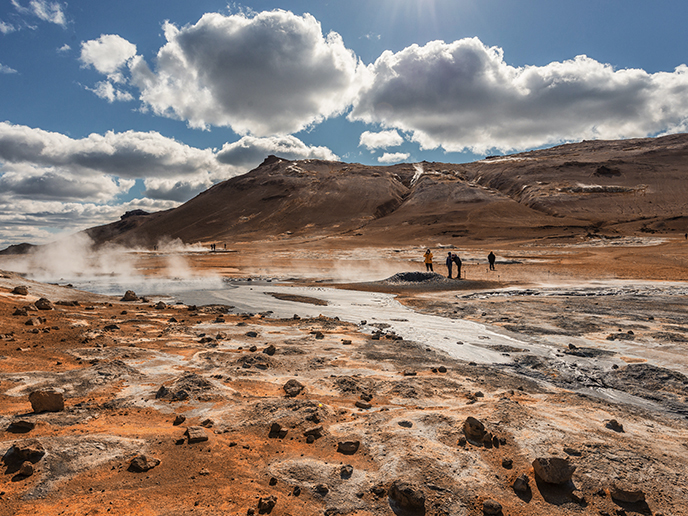Better maps for more expansive space exploration
Word is out that there is a new space race upon us, and both the European Space Agency’s (ESA) and NASA’s plans for the future of space exploration tend to confirm it. But what’s an explorer without a good map? While geographical maps of planetary bodies have been drawn since the days of the Apollo missions, only the United States Geological Survey (USGS) has been able to consistently produce them so far. A situation the EU cannot settle for if it wants to realise its ambitions in the space sector. Matteo Massironi, planetary scientist at the University of Padova, draws a comparison with the geological maps of the Earth. To him, a country without a geological map – and therefore no knowledge of its resources, hazards, risks and environmental features – is a lost land. The same goes for planetary science. “Any planetary mission which does not foresee the production of geological maps is at serious risk of failure. Like a country unaware of its own territory, Europe might become unaware of its own achievements in planetary exploration. It would leave to others the fruits of its technological efforts and, in the long run, this might seriously hamper the competitiveness of European solar system exploration programmes focusing on icy and rocky bodies.” This problem won’t be solved tomorrow, but Massironi and partners under the PLANMAP (Planetary Mapping) project have been planting the seeds to get there. The project, which brought together various European institutions producing planetary geological maps and derived products, has devised innovative ways to do so. “Ever since the Apollo era, planetary geological mapping has been carried out using a photointerpretative approach of black and white images. This inherently limits the definition of geological units to morphological considerations. By comparison, geological units on the Earth are defined by other parameters as well, the most important being lithology and composition. In other words, there is an important conceptual and effective gap between traditional maps of planets and geological maps of the Earth,” Massironi explains.
New techniques and new maps
PLANMAP partly bridges this gap by integrating spectral and colour information into morpho-stratigraphic maps. But it even goes further. The project team borrowed methodologies used by resource exploitation companies on the Earth to reconstruct 3D models of the subsurface, and developed tools to retrieve geological measurements in Martian virtual environments thanks to Curiosity rover data sets. “This will be the future for geological analysis of planetary surfaces as well as the effective training of planetary geological mappers and astronauts,” Massironi notes. Besides these breakthroughs, PLANMAP also contributed to worldwide planetary research creating maps of specific areas of the solar system. They produced, among other things, a traditional geological map of the South Pole Aitken basin – a primary objective for future robotic and human exploration on the Moon. They applied their novel integration of morphological criteria and spectral information to the Rachmaninoff basin map on Mercury; and they produced 3D geological models of the Crommelin crater in Arabia Terra (Mars), the Rembrandt basin (Mercury) and the interior of Comet 67P. In reaction to the project’s findings, ESA has already started collecting geological maps of planetary bodies and setting up repositories. The Italian Space Agency is currently upgrading its scientific web tool MATISSE with the capability of exploiting semantic information coming from planetary geological maps. Meanwhile, Italian and German geological surveys are now looking at geological planetary maps as a potential source of future development. With PLANMAP completed, a new project called GMAP will now foster planetary geological mapping in Europe and provide virtual access to services and tools for planetary cartography. A twin project has also begun in China. Further down the line, Massironi hopes that PLANMAP will help set up a real European Planetary Geological Service.
Keywords
PLANMAP, planetary map, geological map, planetary object, Moon, Mars, space exploration, ESA







